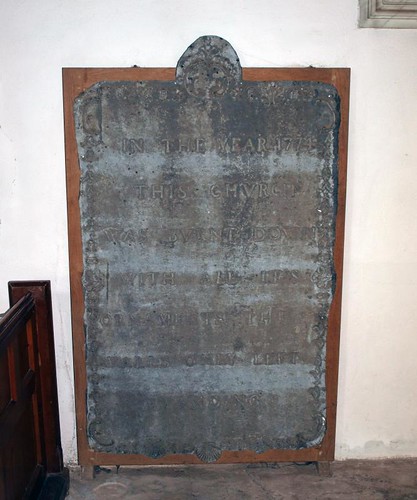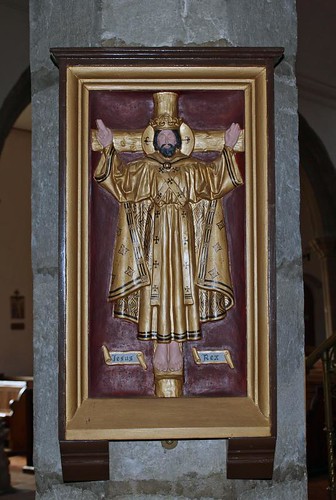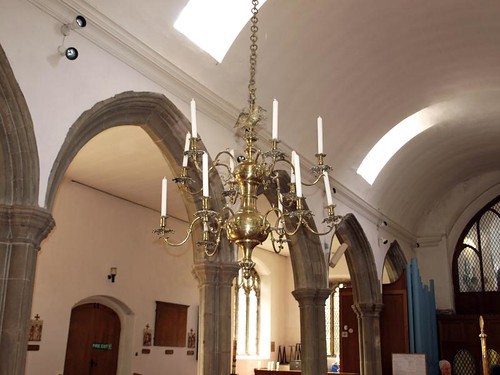The exterior is lovely, the interior less so - a lead plate advises "In 1774 this church was burnt down with all its ornaments the walls only left". The reparations are, frankly, workaday, however Pevsner much more of interest than I did.
ST MARY. Not a church type of South Essex. Nave and chancel, and aisles and chancel-chapels, without any structural divisions. There is thus a total of nine bays from W to E, even if the somewhat lower arches of the last three bays indicate that they belong to the chancel. Yet the church is not as big as all this sounds. The piers are not high, and the arches not wide. The main view is from the S - nine identical three-light Perp windows with four-centred arches and a variety of panel tracery a little more imaginative than the common run of South Essex. The aisle and chancel chapel are embattled, as is the S porch. This incidentally is decorated with shields. The N side of the church is definitely the back side. But it has a pretty early C16 brick porch with a stepped gable. The N windows of the church are C14, those of the aisle earlier than those of the chancel chapel. The aisle windows go with the W tower which must be early to mid C14, as indicated by the ogee-reticulated W window of an odd shape. The tower has angle buttresses. The upper part with the battlements was rebuilt in 1703. The odd shape of the W window is answered inside the church by the equally odd, though different shape of a niche in the N aisle wall (not in situ). This also is clearly C14. The interior of the church is characterized by the contrast of the long arcades with the C19 plastered vault with dormer windows. The arcade on the S side has filleted quatrefoil piers of the C14, re-used in the C15,when the bases were made to fit the length of the piers, and the capitals and moulded arches were added. The N arcade has octagonal piers with double-chamfered arches. - FONT, c. 1200, square bowl on five supports, Purbeck marble, undecorated. - PLATE. Cup and PLATE. Cup of 1650.
BURNHAM-ON-CROUCH. A small town which has grown up by a quay on the River Crouch, it is thronged in summer days with lovers of yachting.
The church is a mile from the river, behind a green and by a farm. The seven great windows looking on the churchyard give the walls an impressive appearance. At the corners of the porch are two monstrous grotesques, and on a buttress is a medieval scratch dial. The font is the oldest possession of the church, a square Norman bowl, and a 14th century niche is the best example of medieval craftsmanship; its crockets and finial and a border of fruit are delicately carved. On the wall of the chapel is a tablet set up in memory of his family by Dr Alexander Scott, who was vicar of Southminster a few miles away. He is remembered because he lived through an hour of great emotion in our history, for he was the chaplain of the Victory, into whose ears the dying Nelson murmured, Thank God, I have done my duty.
The church is a mile from the river, behind a green and by a farm. The seven great windows looking on the churchyard give the walls an impressive appearance. At the corners of the porch are two monstrous grotesques, and on a buttress is a medieval scratch dial. The font is the oldest possession of the church, a square Norman bowl, and a 14th century niche is the best example of medieval craftsmanship; its crockets and finial and a border of fruit are delicately carved. On the wall of the chapel is a tablet set up in memory of his family by Dr Alexander Scott, who was vicar of Southminster a few miles away. He is remembered because he lived through an hour of great emotion in our history, for he was the chaplain of the Victory, into whose ears the dying Nelson murmured, Thank God, I have done my duty.



No comments:
Post a Comment